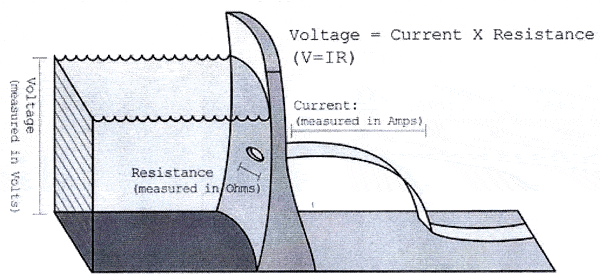Protect Yourself from Electrical Dangers Around your Home
Electricity is vital to our life today. We use it to heat our homes, cook our food, and even power our computers and televisions, which connect us to our world in thousands of different ways. However, as vital as electrical power is to our life today, it is important that we handle it with caution because it can also be a killer.
We hear about people every year who have died through an unfortunate accident involving electricity. Mishandled electricity can cause shock, burns, psychological damage, neurological damage, and heart stoppage.
In order to protect yourself and your family from the dangers of electric shock around your home, you need to do three things:
- 1) Understand how electricity works
- 2) Learn to recognize electrical hazards
- 3) Learn about devices you can use and precautions you can take to be safe
The Language of Electricity
Not many of us are familiar with the vocabulary of electricity.
The firm of Robson Forensic created the diagram and definitions below that help give meaning to electrical concepts that can be difficult to grasp.1

These definitions help explain what the chart shows:
Voltage: is like the water building behind the dam. The level of the water represents the potential energy (potential difference). The higher the level of water (voltage), the high the potential power when released.
Resistance: Can be represented by a hole in the dam. The higher the resistance (the smaller the hole), the less water (current) that can pass through. The lower the resistance (the larger the hole), the more water (current) that can pass through.
Current: The amount of water flowing through the hole. This is a product of the water level (voltage) and the hole in the dam (resistance).1
This simple formula and the chart below explains the danger:1
Voltage = Current x Resistance
120 volts is the standard household voltage.
Voltage Measured in Volts Resistance measured in Ohms Current measured in Amps Shock Intensity Source: OSHA Electrical Safety 120 120,000 Ohms .001 Amps Sensation Threshold 120 12,000 Ohms .01 Amps Painful 120 1,200 Ohms .1 Amps Death
Recognize electrical hazards
The average home abounds in electrical hazards that could be easily corrected and which pose serious threats to safety. One of the most common is the overloaded electrical outlet. These overburdened outlets can easily become overheated and lead to fires. Most outlets are designed to handle no more than two plugs, yet it is not uncommon to see extension cords linking a single outlet to four or more electrical devices. During the holidays when the addition of decorations increases our electrical needs, the problem becomes even greater.
Another threat can be found in worn cords on electrical appliances that leave exposed wires. Inspect your cords and replace the ones that pose a threat to your family’s safety. Ungrounded power tools in the garage workshop pose additional risks.
In the bathroom no electrical equipment should ever be used in or near the bathtub. Bathroom outlets should have a ground fault circuit interrupter that will detect the leakage of electricity and shut down.
Uncovered sockets throughout the house can be a risk to young children who might insert a butter knife, hairpin or other object and receive a severe shock.
Preventing electrical accidents
There are a number of things you can do easily and inexpensively around the home to keep your family safe from electrical injuries.
- 1. Inspect all cords and replace those that are worn or show exposed wires.
- 2. In the workshop, always wear rubber-soled shoes and stand on a rubber mat when working with power tools. In addition, make sure the workshop floor is dry before you turn on a power tool.
- 3. Keep all electrical devices away from water in tubs, showers, and sinks.
- 4. Make sure that your bathroom outlets all have ground fault circuit interrupters that shut down appliances in an overload.
- 5. Apply covers to electrical outlets not in use. These make it impossible for children to insert objects inside.
- 6. Replace all two pronged outlets with those that can handle three-pronged plugs, which are the standard in most homes today. Three-pronged electrical cords include a prong for grounding that makes them much safer.
- 7. Never clip off the third prong on a plug so that it will fit into a two-holed outlet.
Handled with caution and respect, electricity is a wonderful and essential part of life in our homes. However, it is vital that you protect your family by taking the simple precautions described above. Take a few moments to inspect your home’s electrical environment today.
If you or a member of your family has been injured in an electrical accident resulting from negligence, contact the personal injury attorneys at Bachus & Schanker for a free, no obligation consultation.
Sources:
1. Orosz, James M., Robson Forensic, “Electrical Shock Hazards 101”http://editor.des04.com/vo/?FileID=c3b330e3-cc80-46c9-a56b-c2d62596fbf0&m=db2dc369-c6c7-42f3-87b0-bf7915a6d146&MaillD=25362155






